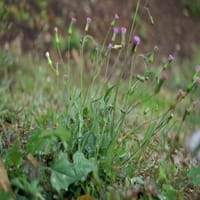Life Span
Perennial
Annual
Type
Flowering Plants
Flowering Plants
Origin
Italy, Southern Europe, western Balkans
Eastern Africa, Middle Africa, Southern Asia
Types
not available
Not Available
Number of Varieties
Not Available
Habitat
Islands, Not Available
Cultivated Beds
USDA Hardiness Zone
7-10
8-11
AHS Heat Zone
7 - 4
8 - 1
Sunset Zone
21,22
Not Available
Habit
Upright/Erect
Upright/Erect
Flower Color
Lavender, Light Blue, White
Pink, Lavender, Violet
Flower Color Modifier
Bicolor
Bicolor
Fruit Color
Non Fruiting Plant
White, Brown
Leaf Color in Spring
Green, Light Green
Green, Dark Green
Leaf Color in Summer
Green, Light Green
Dark Green
Leaf Color in Fall
Green, Light Green
Dark Green
Leaf Color in Winter
Light Green
Light Green
Leaf Shape
Compound
Lyrate-pinnatilobed
Plant Season
Summer, Fall
Summer
Sunlight
Full Sun, Partial Sun
Full Sun, Partial Sun
Type of Soil
Loam
Clay, Loam
The pH of Soil
Acidic, Neutral
Acidic, Neutral, Alkaline
Soil Drainage
Average
Well drained
Bloom Time
Early Summer, Summer, Late Summer
Early Summer, Summer, Late Summer
Tolerances
Heat Tolerance
Drought
Where to Plant?
Ground, Pot
Container, Ground, Pot
How to Plant?
From bulbs, Seedlings, Stem Planting
Seedlings
Plant Maintenance
Low
Medium
Watering Requirements
Average Water Needs, Do Not over Water, Never Over-water, Requires regular watering
Average Water Needs
In Summer
Lots of watering
Lots of watering
In Spring
Moderate
Moderate
In Winter
Average Water
Average Water
Soil pH
Acidic, Neutral
Acidic, Alkaline, Neutral
Soil Type
Loam
Clay, Loamy, Sandy
Soil Drainage Capacity
Average
Well drained
Sun Exposure
Full Sun, Partial Sun
Full Sun, Partial Sun
Pruning
Remove damaged leaves, Remove dead branches, Remove dead leaves, Remove dead or diseased plant parts
Remove damaged leaves, Remove dead branches, Remove dead leaves
Fertilizers
fertilize every 2-3 weeks while growing, fertilize in growing season
Self-fertile
Pests and Diseases
fungus
Ascochyta blight, Bacterial Blight, Powdery mildew
Plant Tolerance
Drought, Heat Tolerance
Drought
Flower Petal Number
Single
Single
Showy Foliage
Not Available
Yes
Foliage Texture
Not Available
Coarse
Foliage Sheen
Not Available
Matte
Attracts
Birds, Insects
Butterflies
Allergy
Toxic
no allergic reactions
Aesthetic Uses
Beautification, Landscape Designing, Showy Purposes
Showy Purposes
Beauty Benefits
Not Available
Not Available
Environmental Uses
Air purification
Air purification
Medicinal Uses
Asthma, Cough, Unknown
Astringent, Depurative, Diaphoretic, Diuretic, Expectorant, Febrifuge, Odontalgic, Ophthalmic
Part of Plant Used
Flowers, Leaves
Flowers, Leaves, Shoots
Other Uses
Decoration Purposes, Showy Purposes, Used as Ornamental plant
Used as a vegetable
Used As Indoor Plant
Yes
No
Used As Outdoor Plant
Yes
Yes
Garden Design
Mixed Border, Wildflower
Mixed Border
Botanical Name
CAMPANULA pyramidalis
EMILIA sonchifolia
Common Name
Chimney Bellflower
Consumption Weed, Lilac Tasselflower, Shaving Brush
In Hindi
Chimney Bellflower
Shaving Brush
In German
Schornstein Glockenblume
Rasierpinsel
In French
cheminée Bellflower
Blaireau
In Spanish
Chimenea Bellflower
Brocha de afeitar
In Greek
καμινάδα καμπανούλα
Βούρτσα ξυρίσματος
In Portuguese
chaminé Bellflower
Pincel de barba
In Polish
komin Bellflower
Pędzel do golenia
In Latin
caminorum purgatores Bellflower
Tondenti Peniculus
Phylum
Tracheophyta
Magnoliophyta
Class
Magnoliopsida
Magnoliopsida
Order
Asterales
Asterales
Family
Campanulaceae
Asteraceae
Clade
Angiosperms, Asterids, Eudicots
Angiosperms, Asterids, Eudicots
Tribe
Not Available
Senecioneae
Subfamily
Not Available
Asteroideae
Number of Species
Not Available
Not Available
Properties of Chimney Bellflower and Shaving Brush
Wondering what are the properties of Chimney Bellflower and Shaving Brush? We provide you with everything About Chimney Bellflower and Shaving Brush. Chimney Bellflower doesn't have thorns and Shaving Brush doesn't have thorns. Also Chimney Bellflower does not have fragrant flowers. Chimney Bellflower has allergic reactions like Toxic and Shaving Brush has allergic reactions like Toxic. Compare all the properties and characteristics of these two plants. Find out which of these plant can be used as indoor plant. If you are interested to decorate your house and garden, find out aesthetic uses, compare them and select the plant which will beautify your surrounding. Along with beautification, try comparing medicinal and edible uses of Chimney Bellflower and Shaving Brush and you can choose the plant having best and most benefits.
Season and Care of Chimney Bellflower and Shaving Brush
Season and care of Chimney Bellflower and Shaving Brush is important to know. While considering everything about Chimney Bellflower and Shaving Brush Care, growing season is an essential factor. Chimney Bellflower season is Summer and Fall and Shaving Brush season is Summer and Fall. The type of soil for Chimney Bellflower is Loam and for Shaving Brush is Clay, Loam while the PH of soil for Chimney Bellflower is Acidic, Neutral and for Shaving Brush is Acidic, Neutral, Alkaline.
Chimney Bellflower and Shaving Brush Physical Information
Chimney Bellflower and Shaving Brush physical information is very important for comparison. Chimney Bellflower height is 120.00 cm and width 45.70 cm whereas Shaving Brush height is 45.70 cm and width 30.50 cm. The color specification of Chimney Bellflower and Shaving Brush are as follows:
Chimney Bellflower flower color: Lavender, Light Blue and White
Chimney Bellflower leaf color: Green and Light Green
Shaving Brush flower color: Pink, Lavender and Violet
- Shaving Brush leaf color: Green and Dark Green
Care of Chimney Bellflower and Shaving Brush
Care of Chimney Bellflower and Shaving Brush include pruning, fertilizers, watering etc. Chimney Bellflower pruning is done Remove damaged leaves, Remove dead branches, Remove dead leaves and Remove dead or diseased plant parts and Shaving Brush pruning is done Remove damaged leaves, Remove dead branches and Remove dead leaves. In summer Chimney Bellflower needs Lots of watering and in winter, it needs Average Water. Whereas, in summer Shaving Brush needs Lots of watering and in winter, it needs Average Water.





